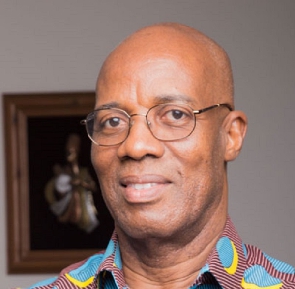In order to guarantee a more sustainable way of reducing losses and enhancing distribution utilities in the energy sector, there is a need for more funding to be directed at the supply-side of energy efficiency instead of the demand-side, energy consultancy firm Arthur Energy Advisors (AEA) has advised. In his presentation at the just-ended Africa Energy Conference in Accra, Jabesh Amissah-Arthur – Partner at Arthur Energy Advisors (AEA) who discussed ‘Distribution Utilities & Energy Efficiency: The Prospects for Sustainable Performance Improvement for Africa’s Distribution Utilities’ – bemoaned how much ‘abnormal’ losses African in countries are incurred by distribution utilities. “If you look in the market for energy efficiency funding, a great majority – if not all – of the energy efficiency funding prioritises demand-side interventions. Very few, if any, of those demand-side interventions will yield the sort of benefit-cost ratios for Africa’s distribution utilities; and given where many countries find themselves with underperforming distribution utilities, we think that it is quite useful for some of the definition and application of funding toward demand-side energy efficiency be put into a place where it can be more sustainably run as an intervention in the form of supply-side energy efficiency. “The total amount of losses within Africa is estimated, if you take just the abnormal losses, at 7 percent; and an average African distribution utility tariff of US$0.14. The total annual losses of Africa’s distribution utilities equal about US$8.5billion. It is, just for context, bigger than the annual GDP in 2021 of 16 out of the 54 African countries; and this is about how much in abnormal losses African distribution utilities are incurring every single year. “So, in terms of how we view energy efficiency and define it for the appropriate African future, it is important that supply-side or utility energy efficiency is firmly put on the table. It generates a level of return, and the impact to distribution utilities which anchor many of our electricity systems is absolutely critical,” he stated. The different forms of loss that can be encountered within the distribution grid may be technical: which includes line losses, transformer core loss, transformer overload, and transformer phase imbalance – with non-technical losses including wiring errors, theft, metering errors and billing errors. He also cautioned against the sole concept of smart-metering as a sure way to find and curb losses – stressing that metering alone is not an effective and sustainable way of curbing losses in utility distribution. According to Mr. Amissah-Arthur, during a ‘detailed investigation’ by his firm on West African distribution utility involving some 76 customers over a period of six months, it was found that for about US$350,000 in investment there were annual losses of US$1.5million from customers who have smart-meters. “So what that means is that, effectively, distribution utilities even by investing in the highest-end metering are still losing a significant amount of electricity to their highest and best-paying customers – either by theft or by other malfeasance. “The appropriate approach and methodology has to be adopted for dealing with energy efficiency solutions, because it is not enough just to buy a whole bunch of meters and deploy them across the network without prioritising the opportunities within that network which bring the greatest bang for our buck. Simply spending money on smart meters doesn’t necessarily mean you find losses,” he added.
Business News of Friday, 14 October 2022
Source: thebftonline.com

















